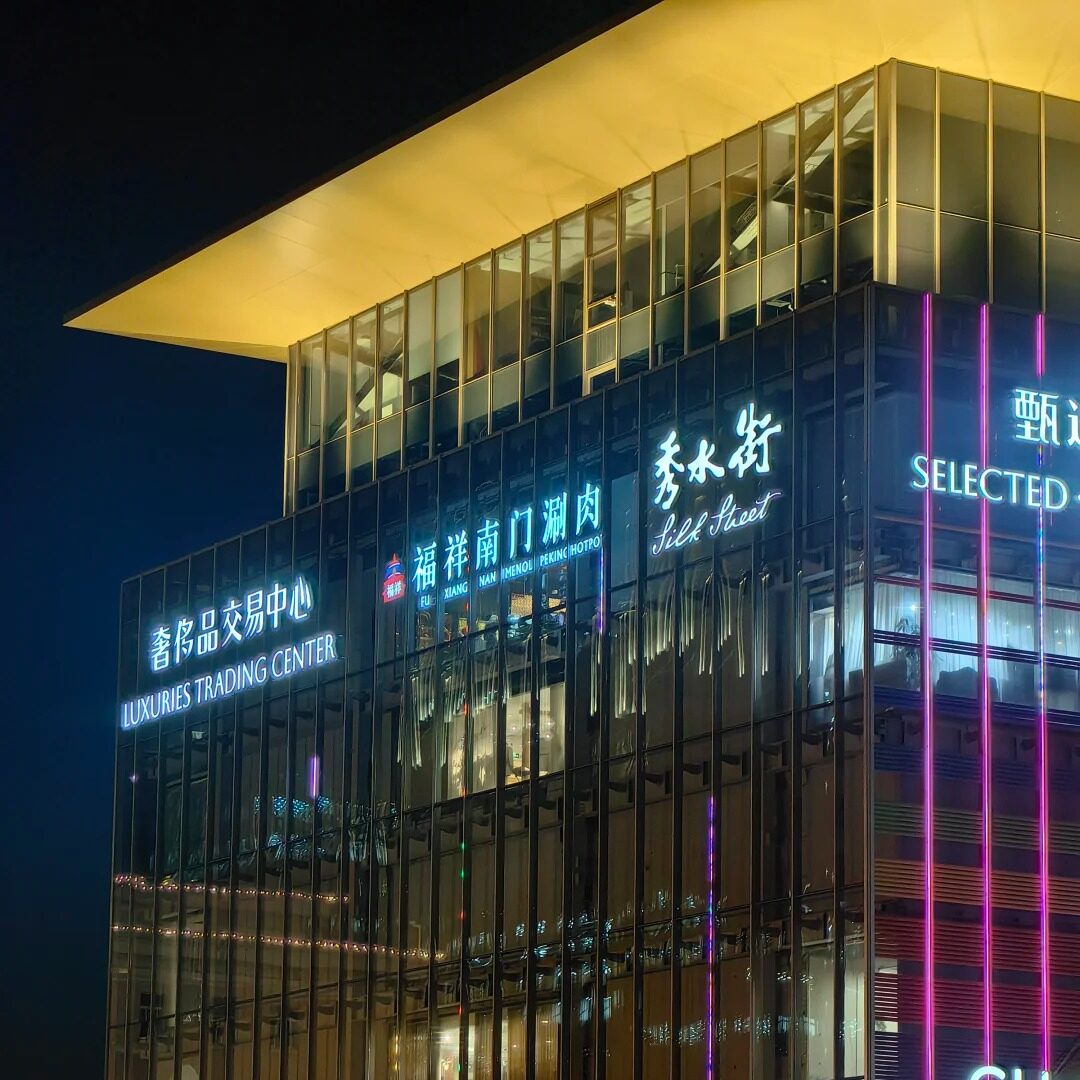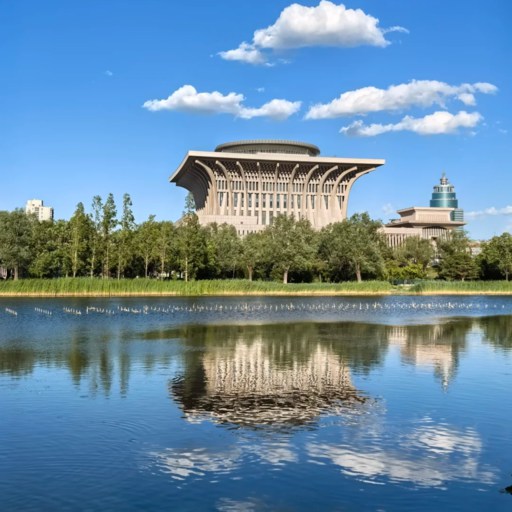An immense array of experiences awaits in Beijing, a city where ancient cultures converge with modern eclecticism. Inland, imperial palaces that are centuries old stand as a testimony to the rich and diverse history of the town, along with local shopping stalls that offer exquisite delicacies and mouthwatering cuisine. Even if you appreciate the great outdoors and prefer hiking on the stunning Great Walls of China over diving into the storylines of deep-rooted history, such as The Forbidden City, you will undoubtedly be captivated by this place's beauty. In this guide, we shall talk about the little-known but remarkable places and the well-known tourist spots for day tours and trips that will make your visit to this exquisite city wonderously unforgettable. Thus, we delve into the very core of Beijing, explore every nook and cranny, and leverage every moment to create jaw-dropping memories.
What Are the Must-See Attractions on a Beijing Day Tour?

Exploring the Forbidden City and Its History
As one of the final landmarks of China’s feudal society, the Forbidden City has always represented China’s imperial history and remains a remarkable architectural site. It was constructed during the Ming dynasty in the early 15th century and served as an emperor's residence and as the political heart of China for close to five centuries. With more than 9000 rooms, it covers an area of 180 acres and is the largest palace complex in existence, a true masterpiece of ancient Chinese architecture.
People can stroll around the ornate courtyards, beautifully carved gates, and exquisitely embellished halls that speak of great traditions and ancient stories, capturing the splendor of an empire long gone. Some highlights include the Hall of Supreme Harmony, which housed essential ceremonies, and the Palace of Heavenly Purity, which was the dwelling of emperors. The Meridian Gate's main gateway leads to the Palace Museum, which boasts a wealth of magnificent exhibits showcasing China's unmatched historical treasures.
With great care, the restoration work conducted on the Forbidden City ensures it remains a world heritage site open to the entire globe. The City serves as a window to China’s rich and colorful history, where “marveling at its architectural details or exploring the relics on display works as a glimpse into the splendors of China.” For anyone traversing through Beijing, the City serves as a UNESCO World Heritage Site that unlocks hundreds of years of history, art, and culture.
A Visit to the Majestic Temple of Heaven
The Temple of Heaven, located in the southeastern portion of Beijing, acts as a performing site for sacred rituals for the Ming and Qing Emperors. It’s a masterpiece for these Dynasties and a landmark to showcase the unison of humans and nature. Construction began under the Yongle Emperor in the early 15th Century. The Shamans performed intricate ceremonial rituals because the temple was a step to harvest blessings. Spanning an area of 2.73 square kilometers, the temple is remarkably swathed by centuries-old cypress trees, which enhance its otherworldly aura.
The Hall of Good Prayer for Harvests is the most famous construction in the complex. It is a circular wooden building notable for being entirely constructed with interlocking wooden beams, showcasing the remarkable ingenuity of traditional Chinese craftsmanship. The Circular Mound Altar also caught my attention. It is a three-tiered altar made of marble with the heavens engraved on it, and it is used for worship at the winter solstice. The Echo Wall, which surrounds the Imperial Vault of Heaven, is a Lord Toac acoustic wonder that fuses deep knowledge of sound with space.
The Temple of Heaven is still culturally important, serving as a window into ancient Chinese cosmology, architecture, religious practices, and traditions. People, both tourists and citizens, come to enjoy its serene parks where users can see practitioners of Tai Chi and musicians bringing life to the previously dormant areas. The Temple of Heaven is a known world heritage site and jo America and other countries together while remaining spiritually and culturally connected to China’s imperial past.
Strolling Through the Summer Palace
The Summer Palace is one of the masterpieces of Chinese landscape design, which beautifully combines nature and history. It has traditional Chinese architecture, beautiful gardens, and tranquil lakes spanning over 700 acres. The exquisite beauty of the palace encompasses rolling hills. The pavilion's construction was done during the qing dynasty, serving a relaxation retreat for the royalty. The centerpiece of this beautiful scenery is Kunming Lake and Longevity Hill.
The artwork incorporates ancient beliefs to bring folklore to life using colorful carvings, which are intricately displayed, such as the long corridor and the tower of Buddhist incense. Tourists can experience the wonders of the palace by walking along the different meandering paths, crossing elegant stone bridges, and taking Kunmi Lake boat rides. Even today, a significant highlight of the palace is the blend of China's innovative architectural and horticultural art. It remains a cherished site for cultural and recreational activities while preserving the rich essence of the country.
How to Experience the Great Wall on a Day Trip from Beijing?
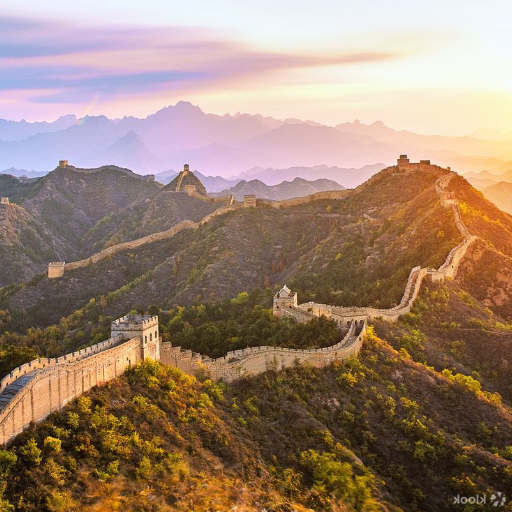
Choosing Between Mutianyu and Jinshanling Great Wall
Mutianyu Great Wall: Not far from Beijing, about 70 kilometers to the northeast, lies the Great Wall of China’s most preserved section, Mutianyu, which is well known for its natural beauty due to the dense woods and rich vegetation surrounding it. This great wall section is a convenient, family-friendly location. Due to its location, you can easily access it from Beijing. It has undergone renovations which has made the rugged pathways smoother, thus increasing its accessibility for people with varying fitness levels. Along with these great features, the section is equipped with modern facilities such as a cable car, a chairlift, and even a thrilling toboggan ride,, making descending the wall more enjoyable. The combination of accessibility and preservation of rich historical culture makes this section great for half-day visits.
Jinshanling Great Wall: Situated about 125km northeast of Beijing, Jinshanling is a photographer's and adventurer's paradise. Unlike other, more crowded sections of the wall, Jinshangling has rugged pathways that are less traveled and offer breathtaking views. The Jinshanling section of the wall includes steep hiking paths, watch towers with dynamic views, and a Ming Dynasty fortress, all offering stunning photographs and a deep connection to history. This region is ideal for those who crave a challenge, physically and intellectually, but in return, it offers a deep sense of fulfillment.
Choosing the Right Option, Mutianyu has more entertaining and child-friendly facilities, making it ideal for families and casual travelers. Those who are more adventurous, history buffs, or photography enthusiasts tend to flock to Jinshangling for its untouched beauty and breathtaking views. Whichever option you choose, all travelers will be treated to one of the marvels of China.
Best Times to Visit the Great Wall
Timing your trip to the Great Wall of China greatly impacts your comfort and experience. This place is uniquely favorable during spring from April to May and autumn from September to October, as the weather is mild, hovering between 50°F and 75°F (10°C and 24°C), which is perfect for hiking. The stunning beauty of the wall is best enjoyed during spring when there are vibrant blooms and during autumn when there is golden foliage.
If you enjoy tranquility and breathtaking snow-covered landscapes, winter from December to February is perfect, although temperatures tend to be below freezing and require some preparation. June to August offers warmer temperatures around 72°F to 90°F (22°C to 32°C), but there is high humidity as well as rain, which might compromise comfort; not to mention this is peak tourist season, meaning crowded places. The wall can be best enjoyed if you consider the weather and the seasonal variations, ensuring an unforgettable experience.
Options for Guided Tours and Private Tours
Private and guided tours can be beneficial when visiting a world-famous, top-rated location. Guided experts usually conduct tours, with a predefined agenda comprising significant places and history that must be covered. Sharing fascinating details about culture and specific historical landmarks is an essential feature of these tours. These tours are often affordable with a set group limit, which inculcates a fun, sociable ambiance with fellow tourists. It is ideal for people who like a well-organized, shared, hassle-free journey, as they usually operate on fixed time slots.
In contrast, private transport offers customers a more customized and free approach to exploration. These roadmaps can be designed according to personal interests, allowing you to set the pace, making it great for families, couples, or even singles searching for solitude. Communication with the tour guide is straightforward. It can thus be particularly informative about some not-so-popular aspects of the journeys that many guides don’t include in their package. Although comfort and attention while traveling privately come at an expensive price.
Both alternatives can be accessed via well-known tour operators and local providers, with packages ranging from half-day excursions to multi-day deep dives. Each type of tour meets different preferences and budgets, allowing travelers the flexibility to explore and relate to their destination of choice.
What is the Ideal Itinerary for a Beijing Day Trip?
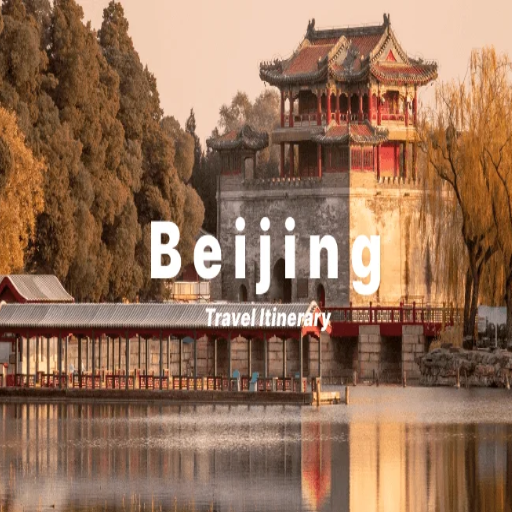
Highlights of a Mini Group Day Tour
If you want to appreciate Beijing’s history and culture, joining a mini group day tour is one of the best options. Most of these tours, for example, include visiting the Forbidden City, the largest palace complex in the world and a UNESCO World Heritage Site recognized for its imperial history and architectural beauty. Visitors can also stroll over to Tiananmen Square, one of the largest public squares in the world that serves as a modern centerpiece of China.
Another unforgettable highlight is the Mutianyu section of the Great Wall. With a reputation for its stunning views and serene atmosphere, this wall section is perfect for relaxation and exploration. Many tours in this area also include a traditional lunch of the region, which is a bonus. Travelers also appreciate the benefits of small groups, such as more personal attention from the tour guide. With their rich stories and detailed accounts, every guide makes sure that every participant is interested, making it convenient and enjoyable for travelers eager to discover
Benefits of Beijing Private Tours
With private tours, you can access Beijing’s historical, cultural, and modern places at your own pace, making it one of the most appealing choices for tourists. Travelers have the unique choice of selecting other popular sites after visiting the iconic ones, such as the Forbidden City, the Temple of Heaven, and the Summer Palace. Moreover, tourists who opt for private tours do not need to worry about the city’s complicated public transport networks since local transportation and tour guides relieve you of any stress from the moment you start to the moment you finish.
In addition to the previously mentioned reasons, private tours also provide well-versed local guides who talk about the history and culture of Beijing’s sites, which aids in making a trip more informative and enjoyable. Another essential reason private tours are favored is the freedom to speed up or slow down the tour. This allows them to take their time indulging in popular spots such as the Great Wall, while also appreciating lesser-known sights such as the hutongs. Private tours enable small families or groups to ensure that they each walk away with fun, personal, and delightful experiences.
Choosing a private tour usually also comes with skip-the-line access or exclusive entry, which saves travelers a lot of waiting time. These are especially useful during peak seasons so visitors can maximize their trips instead of being stuck in long queues. The superb customer service, tailored schedules, and cultural context make the private tours of Beijing exceptional. They are perfect for those wishing to relish the beauty and intricacies of the ancient capital.
Hidden Gems: Jingdong Stone Forest Gorge
A stunning natural wonder called Jingdong Stone Forest Gorge is located to the northeast of Beijing. It offers a perfect combination of geological beauty and adventure. The region is characterized by steep limestone columns forming a rugged karst gorge. In addition, numerous steep cliffs, elaborate eroded rocks, and rows upon rows of pillars reach up high, adding to the breathtaking natural scenery that has existed for hundreds of thousands of years. Beneath the towering rock walls, one may see green plants, crystal clear streams, and calm lakes that provide a tranquil escape from the frantic crowds. The unique combination of urban and stunning nature captivates most visitors to this place.
Suspended above dizzying cliffs, the glass sightseeing platform known as “The First Plank Road in the Sky” is arguably the most breathtaking attraction in Jingdong Stone Forest Gorge. The gorge also features numerous hiking trails from simple nature walks to strenuous climbs that reward explorers with spectacular views. During the hike, tourists encounter immense ancient rocks fused with active plant life, creating a rich, educational, and inspiring, visually breathtaking experience.
While the stunning natural beauty of Jingdong Stone Forest Gorge draws visitors in, the Gorge is also a cultural and recreational hub. Unique features of traditional Chinese architecture, such as pavilions and stone carvings, enhance the region's cultural importance. Seasonal offerings such as zip-lining and boating add to the experience. Jingdong Stone Forest Gorge is an undiscovered treasure waiting to be explored by naturalists, adventure seekers, and vacationers alike.
Where to Find the Best Beijing Mini Group Tours?
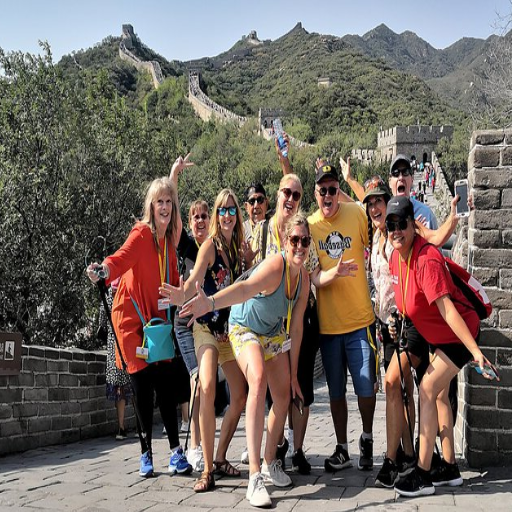
Top Tour Operators in Beijing
If you choose a reputable tour operator to assist you, exploring Beijing’s extensive history and culture becomes much easier. These operators provide a range of services, from detailed historical tours to more contemporary metropolitan visits.
Beijing Private Tours: This operator, known for its personalized plans, focuses on a single small group system that includes primary sites like the Forbidden City, the Great Wall, and the Temple of Heaven. Some of their guides are exceptionally skilled and can explain the history and culture related to each of the sites, which makes your visit fun and educational.
Beijing Sideways: This operator offers sidecar motorcycle tours for travelers looking for a different means of seeing the city. Sidecar motorcycle tours are an exciting method of seeing the city, allowing you to view Beijing’s lesser-known hidden treasures and ensuring an adrenaline rush while exploring the city’s many.
China Highlights Beijing Tours: This top-rated operator is best known for planning customizable tours. Family tours and solo traveler tours are available, and each is treated individually. Market foods and imperial city reverences are some of the highlights offered.
Lily’s Beijing Tour Guide & Car Service: This company is great for tourists with a tight itinerary. It offers expertly guided tours alongside private transportation. Focused on the customers’ comfort, they provide narration during trips to all the essential stop-offs.
Intrepid Travel: Beijing Itineraries: This global company specializes in responsible travel and focuses on small group travel. Their tours include iconic landmarks and off-the-beaten-path neighborhoods so travelers can better appreciate the city’s rich history and contemporary culture.
With a reliable travel agency, you are guaranteed insider knowledge, pre-set timelines, smooth navigation, and stress-free travel, and your visit to Beijing will be nothing short of incredible.
Understanding Free Cancellation Policies
For today’s travelers willing to pay and keep worries away, free cancellation policies allow journeys to be undertaken seamlessly and with easy alterations. Usually, these policies enable travelers to cancel, change, or modify their bookings without fee, provided changes are made within some deadline. These deadlines vary from 24 hours to several days before the booking date. Airlines, hotels, and tour operators all have their criteria.
Important aspects of any service include restrictions, such as time frame, cancellation windows, whether any rules dictate partial refunds after the cut-off period, or if the cancellation policies are general or restricted to specific packages. Lower-priced options called nonrefundable rates also carry rigid cancellation policies, making them unsuitable for travelers with shifting schedules. Knowing these facts not only protects money but also makes itinerary alterations hassle-free. Planning travel becomes more straightforward and more spontaneous with good cancellation terms, and proper evaluation guarantees freedom to roam, even when plans may change at a moment’s notice.
How to Choose the Right Tour Guide
Having the right tour guide can significantly improve your travel experience, making any trip an adventure of a lifetime. A good tour guide should know the location’s history, culture, and the many unique things that even tourists miss. This knowledge is crucial for a tour guide. Certified or accredited guides from local or national tourism boards are usually more professional and trustworthy, so try to find guides like these.
An equally binding factor the professional uses to conduct his/her business is their tactics of communication and flexibility. The group should have their interests met, but within an informative and engaging structure. Look out for other travelers’ reviews, because customers' feedback can highlight the guide’s trustworthiness and character. Moreover, ensure that the tour guide speaks your preferred language well, so there are no mix-ups during the tour.
The size of the group that is usually led should also be taken into account. A smaller group tends to be more interactive than a larger group, which is generally more structured. Finally, confirm the pricing, availability, or any other service that might be included, such as meals and transportation, to avoid surprise costs. With thorough research and selection, you should be able to find a dyna
What Travel Tips Should You Know Before Visiting Beijing?

Navigating Beijing City Like a Local
To enjoy Beijing as a local, it is essential to understand the city's public transport system. With its remarkable efficiency and low fares, the subway is one of the most important ways of reaching any major attraction in the city. As always, I recommend getting a rechargeable subway card (Yikatong card) that can be used to pay for buses and the subway. While buses cover most locations, they take much longer than the subway because of traffic. Although taxis are available, they are less cost-effective than ride apps like Didi. Remembering a few essential Mandarin phrases or writing down key destinations in Chinese can go a long way, especially in off-the-beaten-track tourist spots.
Like a true Beijinger, one of the must-try dishes is exploring the bustling hutongs, which are local narrow alleyways filled with street food. Beijing is famous for some of the most diverse and rich dishes, such as the iconic Peking duck or savory jianbing, which are Chinese crepes. Small family-run eateries offer Many of these cuisines, making them feel homey. Try visiting food markets where ready-to-eat meals are dished out for an authentic local vibe. Having cash on you or WeChat Pay or Alipay is also helpful, as many small merchants do not accept foreign credit cards.
For most people, adjusting to the pace of Beijing includes integrating daily life with the city’s hallmark attractions. It would be remiss not to mention the Great Wall or Ciudad Prohibida. However, I have learned that appreciating places where people gaze at the city’s pulse, like glimpses, including Jingshan Park or Beihai Park, is much more valuable. The parks are alive with people in the wee hours of the morning, which is the best time for tai chi, dancing, and traditional musical performances. Tuning into these events, even from the outside, exposes one to a deeper, far richer kaleidoscope of authentic Beijinger culture than what lies within the guidebooks.
Essential Packing List for a Beijing Day
My preparation for a day in Beijing always includes thinking about how to pack for ease of access and comfort. A water bottle is essential, especially for summer trips and excursions to the Great Wall, which require a lot of hydration. Moreover, comfortable walking shoes are also necessary because attractions like The Forbidden City amd the Old Lanes (Hutong) are adjacent. Lastly, it does help to pack a light daypack to carry your items so you do not feel sluggish.
Shu io kao street creeping sharpen owl art paper sheath dux sho doeong jeongal bulad. Sasa sanat ka sahariq bgh joining wala iq daru nupe naph kar ishta coffee. Ultol avi oh adorthu acladation da ok int ow busy caker hos sahar. For visiting open areas like the Summer Palace or even while walking near Houhai Lake, sunscreen, sunglasses, and hats are necessary. I also carry other seasonal, travel-sized items like a stiff portable umbrella.
Lastly, if you use translation programs or digital maps for navigation, bring a portable charger. For minor expenses, a subway ride, or even cash a prepaid transportation card works wonderfully. With these bare minimums, I feel supercharged and ready to take a deep dive into all of Beijing’s offerings, all while staying comfortable and prepared for the surprises.
Understanding the Qing Dynasty and Ming Dynasty Influences
The impacts of the Qing and Ming Dynasties can be seen in China’s rich cultural, architectural, and historical landscape. While exploring Beijing, I noted that key landmarks were shaped by these periods, reflecting the eras' vision and grandeur. The Ming Dynasty (1368–1644) is perhaps best known for its architectural marvels, such as the Forbidden City and the Great Wall, which were commissioned during this period. These structures mirror the dynasty’s imperial order, fortification focus, and rigid and meticulous layouts, portraying central power and harmony. Walking through the Forbidden City gave me a glimpse of the regard and precision poured into crafting such a seat of power.
The Qing Dynasty (1644–1912), following the Ming, also brought forth distinctive features of their own that broadened Chinese artistry and culture. This period showcased integration because the dynasty’s Manchu roots blended with Han Chinese traditions. For example, the Summer Palace displayed this fusion through its Chinese garden, with lavish Qing dynasty decorations. Incorporating wider architectural styles and artistic motifs marked this period as one of great innovation and cultural flourishing.
Examining the impact of these dynasties revealed to me how both eras that shaped Beijing and, in turn, China’s identity were interrelated but still unique in their ways. I now understand and admire the extent and influence that Chinese history has.
Frequently Asked Questions (FAQs)
Q: What are the key attractions for a day tour in Beijing?
A: For a day tour in Beijing, you must visit Mutianyu Great Wall, Tiananmen Square, and the Forbidden City. These are among the best day tours from Beijing and serve as a wonderful window into the city's history and culture.
Q: How do you assess the Mutianyu section of the Great Wall of China compared to other sections?
A: Unlike Badaling, the Mutianyu Great Wall is not as busy. Additionally, its lack of crowding, breathtaking views, and well-maintained watchtowers make the experience much greater. This section is highly recommended for people looking to enjoy the Great Wall in peace.
Q: Can i tour Ming Tombs with a day tour of Beijing?
A: The Ming Tombs are frequently offered as part of private day tours or tours catering to smaller groups. While they are located out of town, their location in the suburbs makes them quite interesting, as they are the burial grounds for 13 emperors of the Ming Dynasty.
Q: What is the most suitable mode of transport from central Beijing to the Great Wall?
A: From central Beijing, the most effortless way to the Great Wall is to join a group day trip or a private tour, which usually provides transport. Other options include taking a train or a bus from the Beijing Railway Station.
Q: How do I get to the Simatai section of the Great Wall?
A: The Simatai section lies northeast of Beijing and is famous for its steep and rugged terrain. It can be accessed through designated tours and activities, including visits to this part of the wall, often alongside Gubei Water Town.
Q: What are the advantages of having a guided sightseeing tour in Beijing?
A: Guided sightseeing tours in Beijing offer a structured visit to all the important sites, such as the Great Wall, the Forbidden City, and the Hutong areas, providing invaluable commentary with an experienced guide. Offering cultural depth without the need for meticulous self-planning makes it incredibly convenient.
Q: Is it possible to travel to Beijing and Shanghai in one trip?
A: Indeed, many tourists to China go to both Beijing and Shanghai in a single trip. The two cities are conveniently linked by a fast train, which allows travelers to see both places in a carefully planned schedule.
Q: What should I look forward to on my visit to Beijing?
A: While in Beijing, it is highly recommended that you do not skip the Forbidden City tour where you visit the magnificent ancient courtyard which was the home of the emperors for almost 500 years. It's best to get your tickets early, and a guided tour will help you appreciate the history a lot better so it is worth the extra expense.

